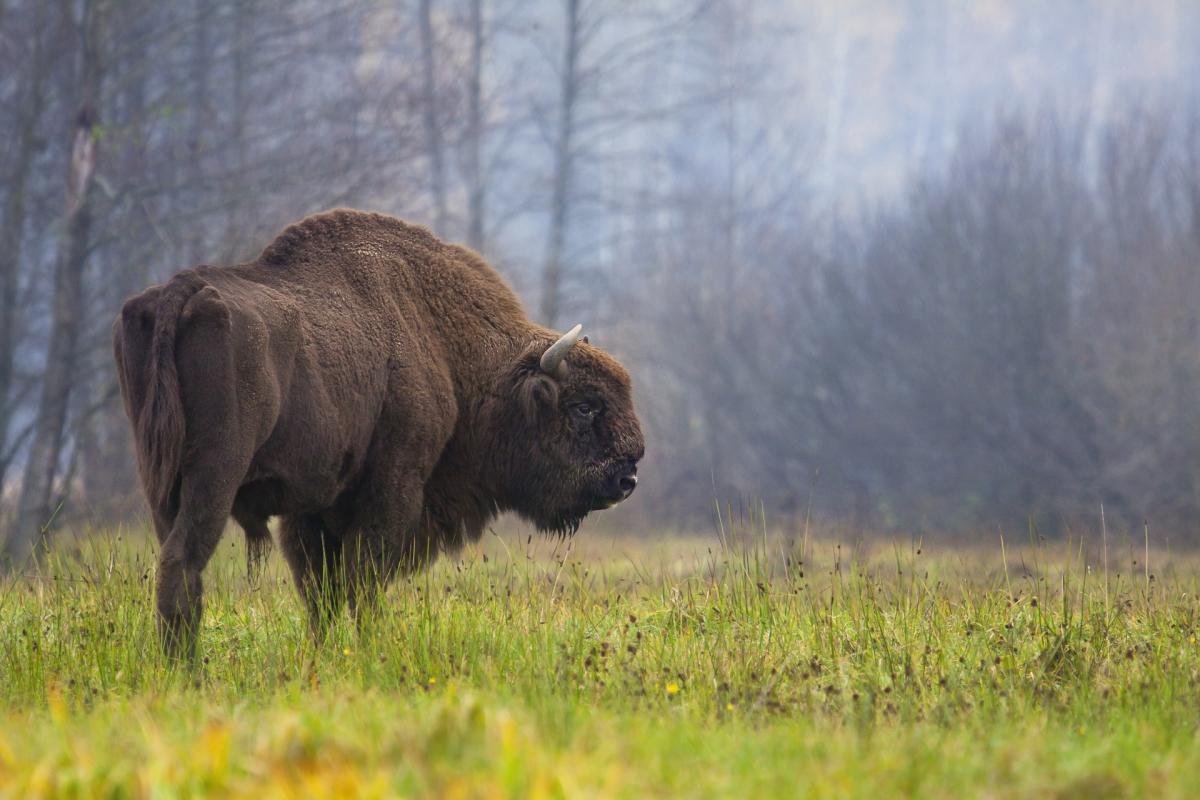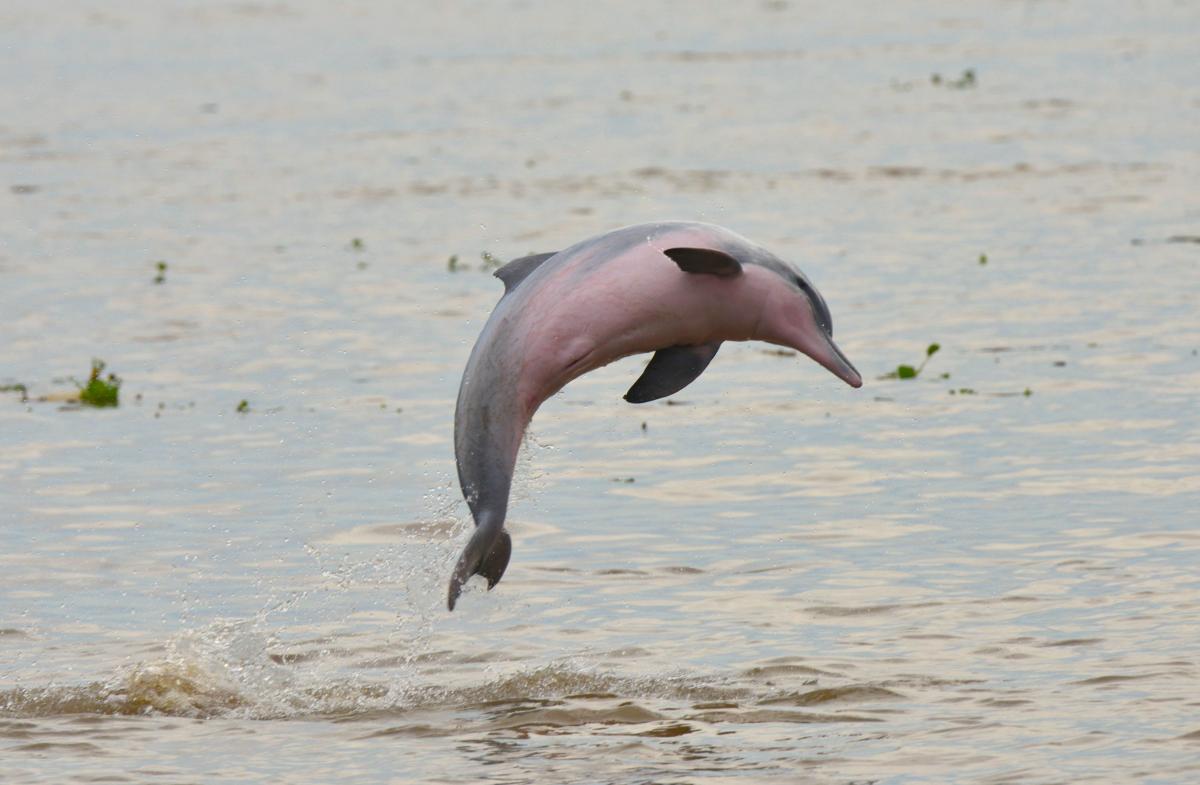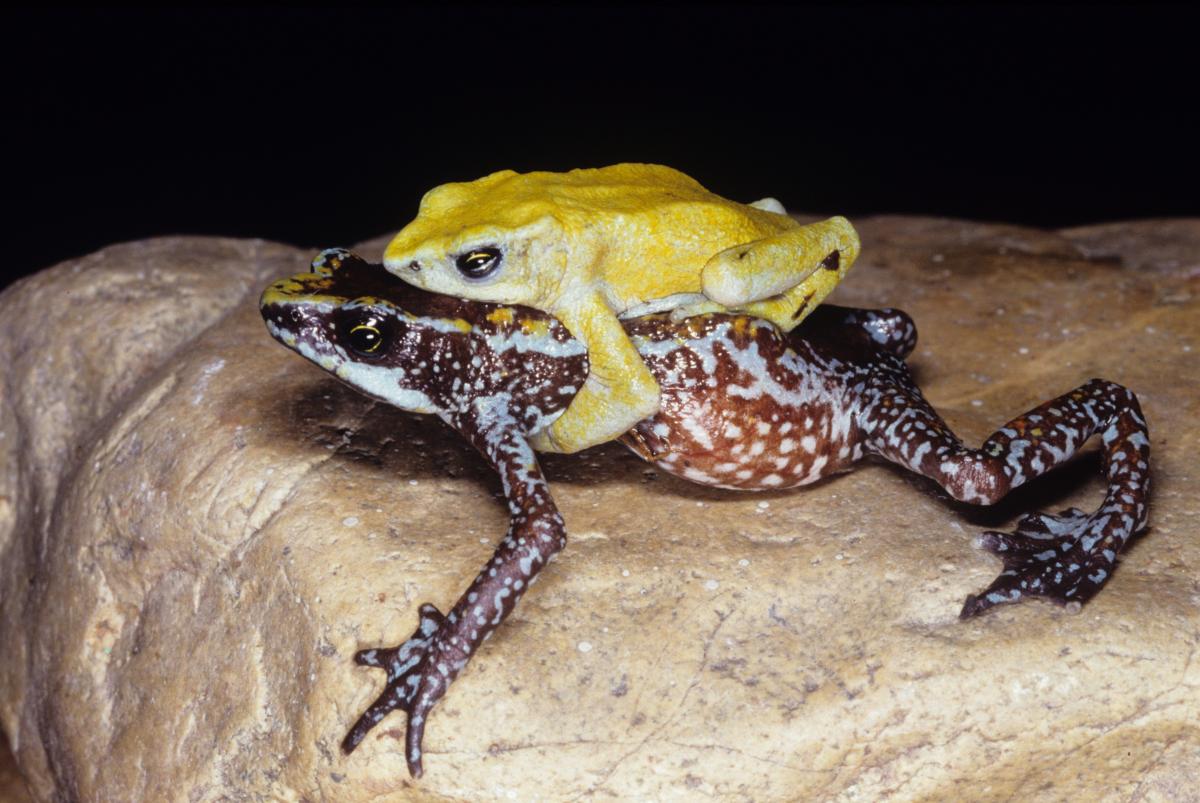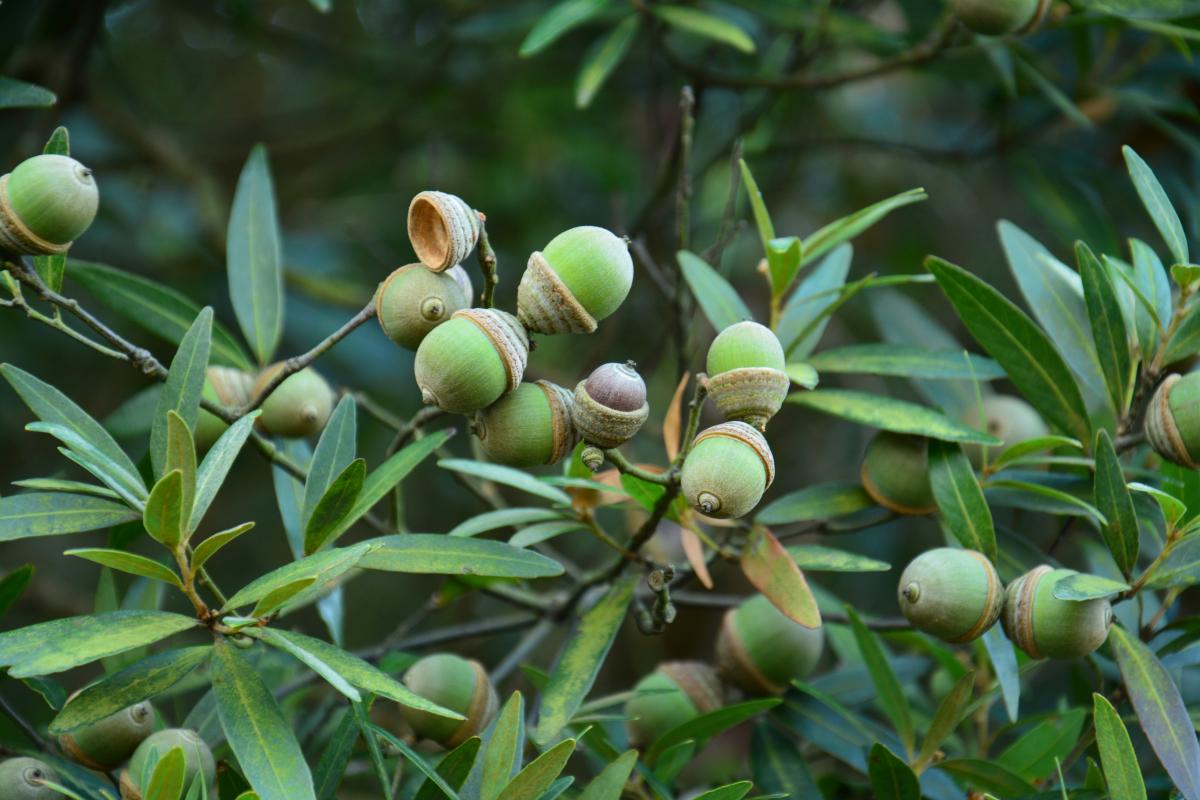European bison recovering, 31 species declared Extinct – IUCN Red List
Gland, Switzerland, 10 December 2020 (IUCN) – The European bison (Bison bonasus), Europe’s largest land mammal, has moved from Vulnerable to Near Threatened thanks to continued conservation efforts, according to today’s update of the IUCN Red List of Threatened Species™. With this update, 31 species also move into the Extinct category, and all of the world’s freshwater dolphin species are now threatened with extinction.
There are now 128,918 species on the IUCN Red List, of which 35,765 are threatened with extinction.
“The European bison and twenty-five other species recoveries documented in today’s IUCN Red List update demonstrate the power of conservation,” said Dr Bruno Oberle, IUCN Director General. “Yet the growing list of Extinct species is a stark reminder that conservation efforts must urgently expand. To tackle global threats such as unsustainable fisheries, land clearing for agriculture, and invasive species, conservation needs to happen around the world and be incorporated into all sectors of the economy.”
“The conservation successes in today’s Red List update provide living proof that the world can set, and meet, ambitious biodiversity targets. They further highlight the need for real, measurable commitments as we formulate and implement the post-2020 global biodiversity framework,” said Dr Jane Smart, Global Director of IUCN’s Biodiversity Conservation Group.
Conservation drives European bison recovery
As a result of long-term conservation management, the wild population of European bison (Bison bonasus) has grown from around 1,800 in 2003 to over 6,200 in 2019, justifying the move from Vulnerable to Near Threatened. The species survived only in captivity in the early 20th century, and was reintroduced to the wild in the 1950s. The largest subpopulations are now found in Poland, Belarus and Russia. There are currently 47 free-ranging European bison herds. However, herds are largely isolated from one another and confined to non-optimal forest habitats, and only eight of them are large enough to be genetically viable in the long term. The species remains dependent on ongoing conservation measures such as translocations of bison to more optimal open habitats and reduction of human-bison conflicts.
“Historically, European bison were reintroduced mostly to forest habitats, where they don’t find enough food in winter. However, when they move out of the forest into agricultural areas, they often find themselves in conflict with people. To reduce the conflict risk and the bison’s dependence on supplementary feeding, it will be important to create protected areas that include open meadows for them to graze”, said Dr Rafał Kowalczyk, co-author of the new assessment and member of the IUCN SSC Bison Specialist Group.
All of the world’s freshwater dolphins now threatened
With the tucuxi (Sotalia fluviatilis) moving from Data Deficient to Endangered, all of the world’s freshwater dolphin species are now listed as threatened on the IUCN Red List. This small grey dolphin species found in the Amazon river system has been severely depleted by incidental mortality in fishing gear, damming of rivers and pollution. Eliminating the use of gillnets – curtains of fishing net that hang in the water – and reducing the number of dams in tucuxi habitat are priorities to enable numbers to recover. Enforcing the ban on the deliberate killing of tucuxis is also essential.
Extinctions
The lost shark (Carcharhinus obsoletus), which was only formally described last year, enters the Red List as Critically Endangered (Possibly Extinct). The species was last recorded in 1934. Its habitat in the South China Sea has been extensively fished for more than a century and remains one of the most overexploited marine regions in the world. As it is unlikely that the species could have persisted under this heavy pressure, the lost shark may already be extinct.
All of the 17 freshwater fish species endemic to Lake Lanao and its outlet in the Philippines are now Extinct (15 species) or Critically Endangered (Possibly Extinct) (two species). The extinctions were caused by predatory introduced species, compounded by overharvesting and destructive fishing methods.
Three Central American frog species have been newly declared Extinct. Additionally, twenty-two frog species across Central and South America were listed as Critically Endangered (Possibly Extinct). The main driver of these drastic declines is chytridiomycosis disease. Conservation efforts to protect critical habitat are helping populations of several other amphibian species to recover. Among them is the Oaxaca Treefrog (Sarcohyla celata), which moved from Critically Endangered to Near Threatened thanks to actions by local communities in Mexico.
Plants: proteas and oaks under pressure
The protea family has been comprehensively assessed with this update, revealing that 45% (637 of 1,464 species) of these striking flowering plants that grow mainly across the Southern Hemisphere are Vulnerable, Endangered or Critically Endangered. Many of the species have highly restricted ranges, making them more vulnerable to the spread of invasive alien species, changes to natural fire cycles caused by humans and linked with climate change, and loss of habitat to agriculture. The protea family includes three Macadamia species – the same species that produce the farmed macadamia nut crop – which have entered the IUCN Red List as threatened with extinction in the wild. The macadamia nut (Macadamia integrifolia) is listed as Vulnerable, while M. ternifolia and M. tetraphylla are listed as Endangered.
Oak trees have been comprehensively assessed, revealing that almost one third (31%, 113 of 430 species) are threatened with extinction. Nine Asian oaks enter the IUCN Red List already Critically Endangered (Possibly Extinct or Possibly Extinct in the Wild). The highest numbers of threatened species are in China and Mexico, followed by Viet Nam, the United States and Malaysia. Land clearance for agriculture and logging are the most common threats in China, Mexico and Southeast Asia. Invasive alien species and diseases and climate change are the key threats to oaks in the United States.
Download photos, translations and summary statistics here.
For more information or interviews please contact:
Harriet Brooker, IUCN Media Relations, +44 7960241862, press@iucn.org
Matthias Fiechter, IUCN Media Relations, +41 795360117, press@iucn.org
###
Supporting quotes:
“We are proud to have supported the advances in knowledge reflected in this IUCN Red List update, including the assessments of over 1,400 species in the protea plant family. This has revealed significant threats to these plants on multiple continents, and serves as a baseline for monitoring future changes in their extinction risk. The power of this knowledge is essential for guiding conservation policy and action,” said Masako Yamato, General Manager, Environmental Affairs Division of Toyota Motor Corporation.
"In addition to documenting both recoveries and extinctions, this update to the Red List includes several species of heavily traded medicinal plants including Nagchatri (Trillium govanianum), and Oshá (Ligusticum porteri). As we continue to grapple with a global pandemic, these assessments are a testament both to the importance of monitoring trends in a changing environment, and to the critical role of zoos, aquariums, and botanic gardens who contributed to hundreds of species assessments even while under deep financial strain," said Clayton Meredith, Species Survival Officer for Plants, ABQ BioPark.
“Oaks are amongst the most charismatic of trees, and they are also keystone species in the habitats they occupy. More than 2,300 species of bird, mosses, fungi, insects, lichens and mammals are recorded as using native oaks for food and shelter in the UK, and the same will be true for the 113 species of oak now threatened with extinction. The loss of just one of these tree species has catastrophic consequences for hundreds of other species,” said Paul Smith, Secretary General of BGCI.
“It’s fantastic that 17 new assessments in this update, of threatened plant species at Ebo Forest, Cameroon, have already helped the Cameroon government reach a decision to cancel the logging concession for this vast forest. Ebo Forest is crucial for biodiversity,” said Dr Martin Cheek, Senior Research Leader of the Africa team at Royal Botanic Gardens, Kew. “We teach our students that an IUCN Red List assessment can help change the fate of a species, but this is the quickest example I’ve ever seen, and also the most impactful in terms of area of forest saved,” said Dr Eimear Nic Lughadha, Senior Research Leader in Conservation Assessment and Analysis at Kew.
“While it’s reassuring to see conservation efforts working for the European bison, the 35,765 species on the Red List that are threatened with extinction are an indisputable reminder that we must persevere with dramatic conservation goals,” said Sean T. O’Brien, President and CEO of Nature Serve. “By working together to utilize data science and technology as a means to influence global policy, we can protect our planet’s precious biodiversity.”
“As a conservationist, the most emotionally impactful news to present is the confirmation of extinction. The causes range from overexploiting to disease, with some threats easier to mitigate than others. The impact of chytrid fungus on amphibian populations has been particularly vexing, challenging conservationists worldwide. There have been successes and recoveries, as noted in the update, and we need to redouble our efforts to address this and other emerging disease threats to biodiversity,” said Dr Thomas E Lacher, Jr., Texas A&M University.
“Seeing so many species joining the Extinct category, many of which have only just been discovered, is heart-breaking. The Red List is a vital tool that helps us understand the pressures facing the diversity of life and therefore the conservation responses needed. A healthy natural world is vital to our wellbeing - we now need to see a clear focus placed on the recovery of species and the maintenance of diversity within the new Global Biodiversity Framework,” said Dr Andrew Terry, Director of Conservation and Policy at ZSL.
###
Editor’s notes
IUCN actively supports the development of an ambitious Post-2020 Global Biodiversity Framework. The IUCN Red List of Threatened SpeciesTM and Red List Index will be used to track progress towards species conservation targets.
IUCN–Toyota Partnership: The five-year partnership between IUCN and Toyota Motor Corporation announced in May 2016 has been significantly increasing knowledge on the extinction risk of more than 28,000 species, including many that are key food sources for a significant portion of the global population. This partnership is driven by the Toyota Environmental Challenge 2050, which aims to reduce the negative impacts associated with automobiles to zero, whilst simultaneously making positive impacts on society.
The IUCN Red List
Global figures for the 2020-3 IUCN Red List of Threatened Species:
- TOTAL SPECIES ASSESSED = 128,918
- (Total threatened species = 35,765)
- Extinct = 902
- Extinct in the Wild = 80
- Critically Endangered = 7,762
- Endangered = 13,285
- Vulnerable = 14,718
- Near Threatened = 7,644
- Lower Risk/conservation dependent = 180 (this is an old category that is gradually being phased out of The IUCN Red List)
- Least Concern = 66,469
- Data Deficient = 17,878
The figures presented above are only for those species that have been assessed for The IUCN Red List to date. Although not all of the world’s species have been assessed, The IUCN Red List provides a useful snapshot of what is happening to species today and highlights the urgent need for conservation action. Relative percentages for threatened species cannot be provided for many taxonomic groups on The IUCN Red List because they have not been comprehensively assessed. For many of these groups, assessment efforts have focused on threatened species; therefore, the percentage of threatened species for these groups would be heavily biased.
For those groups that have been comprehensively assessed, the percentage of threatened species can be calculated, but the actual number of threatened species is often uncertain because it is not known whether Data Deficient (DD) species are actually threatened or not. Therefore, the percentages presented above provide the best estimate of extinction risk for those groups that have been comprehensively assessed (excluding Extinct species), based on the assumption that Data Deficient species are equally threatened as data sufficient species. In other words, this is a mid-point figure within a range from x% threatened species (if all DD species are not threatened) to y% threatened species (if all DD species are threatened). Available evidence indicates that this is a best estimate.
The IUCN Red List threat categories are as follows, in descending order of threat:
- Extinct or Extinct in the Wild
- Critically Endangered, Endangered and Vulnerable: species threatened with global extinction.
- Near Threatened: species close to the threatened thresholds or that would be threatened without ongoing conservation measures.
- Least Concern: species evaluated with a lower risk of extinction.
- Data Deficient: no assessment because of insufficient data.
- Critically Endangered (Possibly Extinct) or Critically Endangered (Possibly Extinct in the Wild): these are not IUCN Red List Categories, but are tags developed to identify those Critically Endangered species that are in all probability already extinct but for which confirmation is required; for example, through more extensive surveys being carried out and failing to find any individuals.









